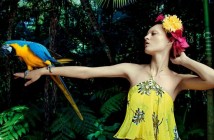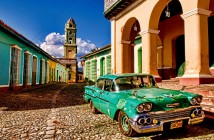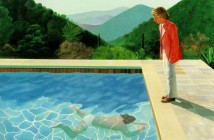The vast frozen arena of the Antarctic has been a source of fascination and challenge for intrepid visitors since it was first discovered in the 19th century. It has remained enigmatic, dangerous, entirely free of economic clamour and very, very cold. ‘Below the 40th latitude there is no law; below the 50th no god; below the 60th no common sense and below the 70th no intelligence whatsoever.’ So proclaimed author Kim Stanley Robinson while explorer Captain Scott, leader of the ill-fated 1912 discovery expedition, wrote with delightful and now poignant British understatement that ‘”I have come to the conclusion that life in the Antarctic Regions can be very pleasant.”
Over the last century a surprisingly prolific artistic legacy has emerged from these pioneer’s ice-clad forays. In 1908, Sir Ernest Shackleton and his team brought along a small printing press and created the world’s first book published in the region. Covered in sealskin and including a moving poem by Shackleton himself, ‘Aurora Australis’ remains testament to the spirit of a heroic breed of creatives. Californian artist Lily Simonson is the latest visionary to record her unique impression of this most mercurial of continents.

The Births of Venus, 2010
Her first visit as ‘an extra pair of hands’ for a geologist gave Simonson the South Pole bug. She returned in 2014 under the patronage of the National Science Foundation’s Antarctic Artists and Writers Program, which has imported photographers, filmmakers, writers and historians to the coldest place in the world for the last thirty years. Recipients spend three months living alongside scientists at McMurdo Station, the continent’s main metropolis. Simonson brought sketchbooks, charcoal, a hundred square feet of canvas, and 25 gallons of oil paint. Scuba-diving under the Southern Ocean in temperatures that descend to -10c, she captured in vivid detail the mysterious sea creatures that thrive in the frigid yet rich habitat.

Moths 13, 2011
“I’m drawn to life in extreme environments” says Simonson, “places where it seems counter-intuitive for life to thrive.” There were very local challenges to overcome, she could only work outside for 20 minutes before her paints froze and at night the art supplies were bundled in a sleeping bag to keep them warm. There was also a lot of preparation needed, Simonson had to undertake 50 practice dives before she could first venture under the ice, and speaks of sending early drafts, painted at the station, back to her LA studio “on vessels.”

Ready for it, 2008
After a month of dives, she left McMurdo Station to camp in the regions’s Dry Valleys, and, dramatically, at the top of Mount Erebus—the world’s southernmost active volcano boasting a permanent lake of molten lava within its frozen peak.
Los Angeles-based gallery, CB1 held a recent showing of the artist’s flourescent, vaguely Martian landscapes inspired by these subterranean adventures “The sea ice is all these crazy colours… gold, neon green turquoise. There are these huge stalactite-type things made of ice crystals. They look like giant feather boa chandeliers.” observes Simonson on her dives, “It’s so magnificent, you almost don’t even notice your body,” she says. “The first 10 or 15 times I dove, I didn’t feel cold.” It’s an experience she’d love to repeat—”It’s a really addictive place,” she says of the edge of the world which has frozen itself into her imagination: “I feel like I’ve barely scratched the surface of this subject,” she reflects. “What I saw down there, I feel like I could spend a couple more decades painting.”

Like Bunnies (Sea Hare Mating Chain), 2012
Tragically climate change is radically re-shaping the continent and eroding the fragile table of life there “It’s this paradoxical relationship, where there’s no human population there and it’s extremely remote, yet it’s very susceptible to human-induced change.” Back in California, Simonson works to address this, writing up guides to the species in her paintings and holding question and answer panels in conjunction with her exhibits ‘This stuff is so much weirder than I can impose on what I’m painting. Truth really is stranger than fiction’ she notes ‘I hope to return, Antarctica is the most beautiful place in the world’.
To see the rest of Lily Simonson’s work, see her website here
All images courtesy Lily Simonson





